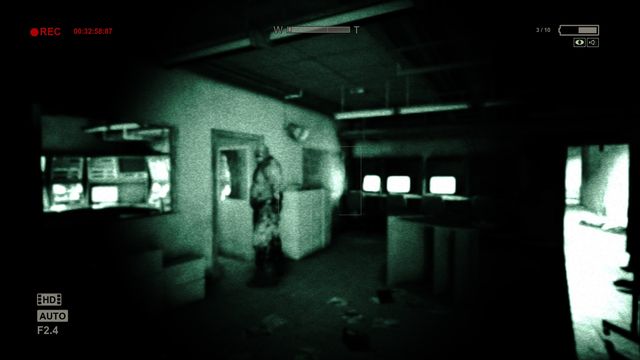
Outlast, according to the MDA approach, is a horror, narrative, challenge, and discovery game that follows a reporter as he breaks into a psychiatric hospital after receiving information about unethical occurrences there. The game then takes the player on a horrifying journey as your character fights to stay alive and escape the hospital that he now finds himself now trapped in. One of the most interesting aspects of this game is how it is essentially designed as a spectator sport, in the sense that unlike most games, the player is unable to attack or defend themselves from any of the patients in the hospital. The entirety of the gameplay involves the player running and hiding from the chasing enemies. In this sense, the player becomes a spectator for events unfolding around them, unable to actually stop someone from attacking. This is reinforced in the video camera that the main character carries around for most of the game. As a journalist, he is intent on recording what he finds in the hospital. The video camera here is used as a tool for the player, which helps them navigate through the dark as well as zoom in without getting too close. The camera is vital to the survival of the player. Your camera’s night vision will not work if you run out of batteries, which keep the player constantly on the lookout as they traverse the hospital.
I think there are a few reasons that the designers decided to use a camera in this game. Firstly, as mentioned earlier, it fits narratively, but it also reinforces that spectatorship. The fact that the player is unable to defend themselves and can only watch as these horrible things unfold around them really helps to instill that sense of dread that I think designers want present in a horror game. It also encourages the player to really look at what they are seeing and explore the areas they find themselves in. Without the distractions of weapons and endless inventory items, the player can focus more on uncovering the dark truth surrounding the hospital.
Your character is unable to pick up anything that could be used as a weapon, and is never given the option to even use his own body as a defense weapon. I think this was meant to enforce the lack of control the player is meant to feel. The camera’s night vision, while helpful for navigating the maze of the hospital, can also be seen as another method of forcing the player to watch. Its almost like shining a light directly on the horror, which is exactly what I think the designers were going for. They most certainly want you to see the disturbing bloody images they’ve concocted for the game. The cameras night vision works on three levels: helping the player see where they’re going, forcing them to look at the terrible things occurring, and narratively, exposing the corruption and violence that your character intends to share with the world. With this design, the player is frustrated at not being able to hold anything but the camera, but also desperately wanting to keep the camera close. One sequence involves the player looking for the camera after they drop it, which is one of the more terrifying parts of the game. This design provides an interesting dichotomy in that the camera is crucial to escape, but useless for immediate retaliation. You want to find your way out, but you’ll have to look at the scary inpatients first.